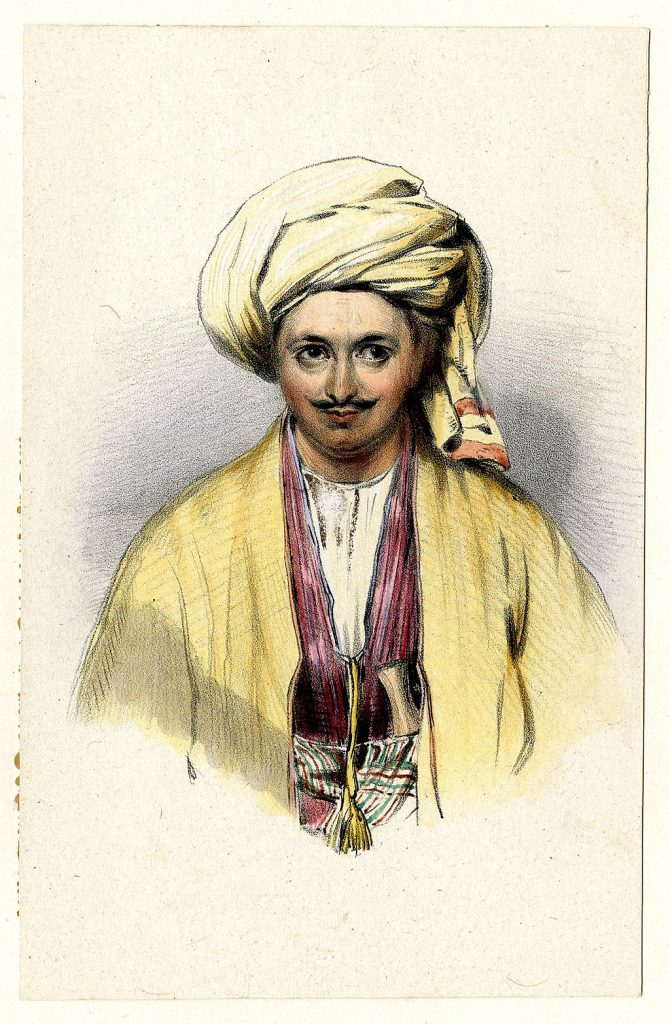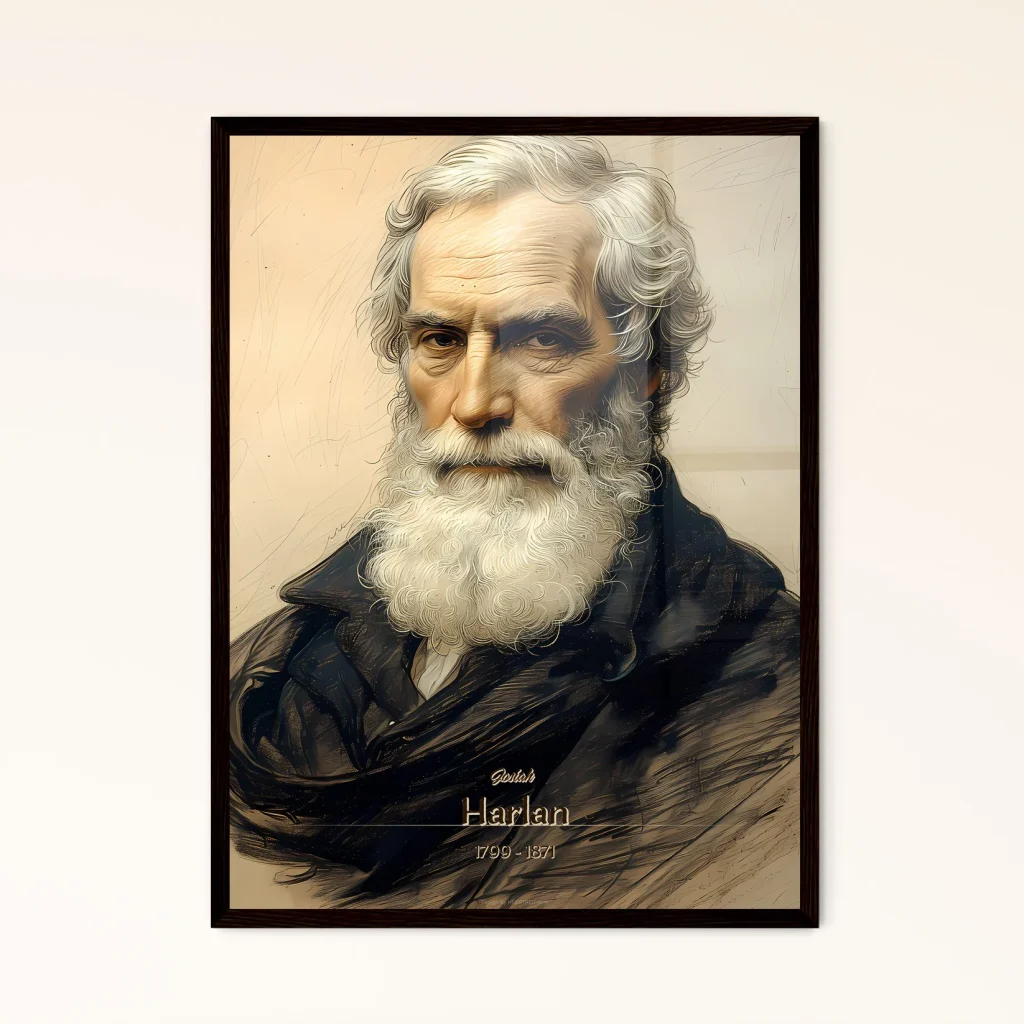BURNES, SIR ALEXANDER (1805-1841), British traveller, explorer and writer, was born on 16 May 1805. He joined Bombay infantry in 1821. Upon his arrival in India, he devoted himself to the study of the local languages and was, while still an ensign, selected for the post of regimental interpreter. In 1829, he was transferred to the political department as assistant to the Political Resident in Cutch. In 1831, he was sent on a complimentary mission to Lahore, in charge of English horses, including a team of carthorses, four mares and a stallion, sent by the King of England as presents for Maharaja Ranjit Singh.
DE LA ROCHE, HENRI FRANCOIS STANISLAUS (d 1842), a Frenchman born in Mauritius, served in the army of Begam Samru. As the force was disbanded by the British after the Begam`s death, he came to Lahore in 1838 and took up service under Maharaja Ranjit Singh as a cavalry officer on a salary of Rs 500 per month. Apart from army duties, he was occasionally deputed to settle boundary disputes on the Sikh frontier.
FATEH SINGH AHLUVALIA (d. 1836), son of Bhag Singh, and a grandnephew of Jassa Singh Ahluvalia, leader of the Ahluvalia misi and of the Dal Khalsa, who in 1758 proclaimed the sovereignty of the Sikhs in the Punjab. Fateh Singh succeeded to the Ahluvalia chiefship in 1801. He was the chosen companion of Maharaja Ranjit Singh, with whom he in 1802 exchanged turbans in a permanent bond of brotherhood. Fateh Singh took part in almost all the early campaigns of Ranjit Singh Kasur (1802-03), Malva (1806-08), Kangra (1809), Multan (1818), Kashmir (1819) and Mankera (1821). He fought in the battle of Haidru (1813) and held command in the Bhimbar, Rajauri and Bahawalpur expeditions.
GOBIND RAM, BHAI (d. 1845), son of Bhai Harbhaj and a grandson of Bhai Vasti Ram, had, like his brother Bhai Ram Singh, an honoured position at the court of Maharaja Ranjit Singh. A good scholar of Sanskrit and Persian, Gobind Ram, was of a retiring nature and more interested in spiritualism and medicine. According to Sohan Lal Suri, the court historian, Maharaja Ranjit Singh was highly impressed by Gobind Ram`s knowledge of metaphysics and often had long discussions with him. Bhai Gobind Ram, who suffered a paralytic stroke in 1840, died at Lahore on 23 March 1845.
Discover the incredible journey of Josiah Harlan, a 19th-century adventurer who navigated allegiance between the British, Sikhs, and Afghans.
Uncover Maharaja Jagatjit Singh's remarkable journey from Kapurthala's ascension to a global presence at the League of Nations. Discover his aesthetic legacy.
Explore the life of Jawahar Singh Randhava, a notable figure in the Sikh army. Discover his journey, heritage, and service under Maharaja Ranjit Singh.
Discover the history of the Central Malva Khalsa Pritinidhi Diwan, founded in 1906, focused on Sikh faith, education, women's upliftment, and more.
Learn about Lal Kaul, a Kashmiri Brahman who served in Afghanistan and Sikh expeditions, becoming a key leader in 19th-century South Asian history.
Explore Frank E. Mevins's role as a Prussian colonel in the Sikh army and his discharge in 1830. Discover the historic conditions for foreign service in Punjab.






